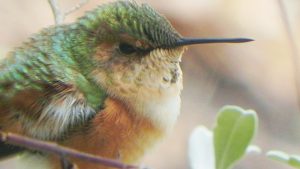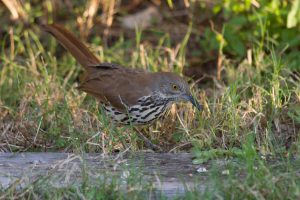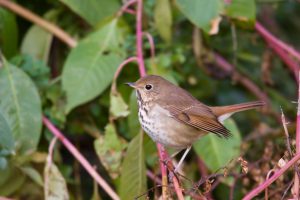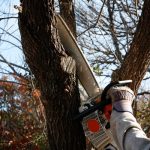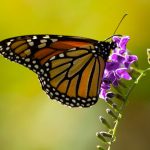The first flocks of purple martins will be back from Brazil this week. If you’re enjoying the return of your martins, you’re not alone: It’s the weekend of the Great Backyard Bird Count, Feb. 17-20.
Purple martins are back! — returning to nests high above Woodlawn, Calaveras Lake, and other long established local colonies. If you’re awaiting the return of your own backyard martins, you’re not alone. This weekend, February 17-20, the Great Backyard Bird Count , a.k.a. the GBBC, will be held around the world.
In more than 100 countries, birders of all ages and skill levels will be counting birds at feeders, schools, parks — even grackles in parking lots — and submitting their results and photos online. Just register at the GBBC or at eBird (there’s even a mobile app) and you’re good to go. Wherever you are, whoever you’re with, just count all the birds you can identify, calculate how far you’ve gone and how long you watched (at least 15 minutes). The interface is able to provide a checklist of the expected birds in your area, making identification a little easier.
The GBBC is sponsored by the Cornell Lab of Ornithology and the National Audubon Society, making possible a huge annual snapshot of where migrating birds are located.
In South Texas, a winter day with binoculars can yield such a long checklist that birders from around the country regularly congregate on the Texas coast, South Texas and even San Antonio. For the GBBC, you can count birds at home, at work, or in local roadsides, parks and natural areas; Mitchell Lake Audubon Center and the San Antonio Botanical Garden are both great spots to get started. If you find birdwatching addictive — and Cornell is hoping you will — you can submit multiple checklists.
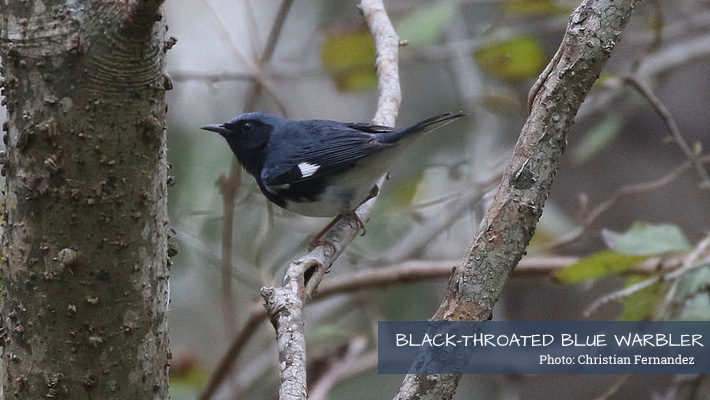 In February 2017, a black-throated blue warbler was an extraordinary find in a local backyard bordering Salado Creek, drawing birders and photographers from across the state. |
You may ask why SAWS would promote birdwatching. It’s simple: more backyard bird habitat means less grass and less water needed — the essence of water conservation. Less water, more birds — it’s a beautiful thing!
If you’re trying to boost your count, remember: in South Texas, less grass means less grackles. Great-tailed grackles love strolling the lawn to see what’s on the horizontal menu. Without as much grass, they’re likely to move on to greener pastures… making more room in your yard for finches, redbirds, and other songbirds. Examples:
| Rufous hummingbird | Yes, Virginia, there are hummingbirds in winter. The freeze-hardy, fiery little rufous hummingbird spends summers in Alaska, but winter migration finds it in South Texas (where cool weather helps keep the nectar fresh!)
A hummingbird garden is in constant bloom if it’s done right, and it’s a great way to trade your turf grass for flowers. (Shrimp plant, rosemary, red-blooming sages and even Mexican honeysuckle are all great in the winter garden.)
|
| Long billed thrasher | A classic resident of deep South Texas thickets, recognized by its distinctive beak and its spotted brown coat. Thrashers are often heard before they’re seen, working their way through their vocal repertoire.
As brush is cleared for home construction, a few thrashers in town have learned to substitute dense, sprawling backyard shrubs like primrose jasmine for their accustomed thorny habitat. As long as the shrubs aren’t brutally hedged during nesting season, primrose jasmines can make a surprisingly secure place to hide a nest.
|
| Hermit thrush | The hermit thrush forages for fruit and other invertebrates gleaned from the ground, often found by cocking its eye and listening carefully like its close relative the robin. It’s a beautiful singer.
The hermit thrush spends winter and spring in San Antonio. Recognize it by its song, cautious demeanor, and its reddish tail.
|


